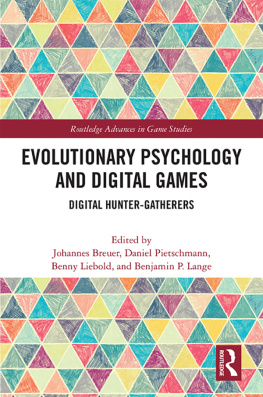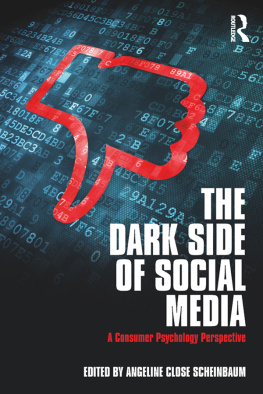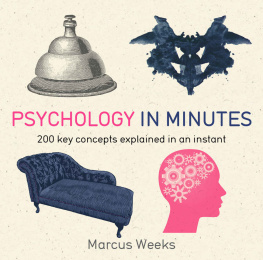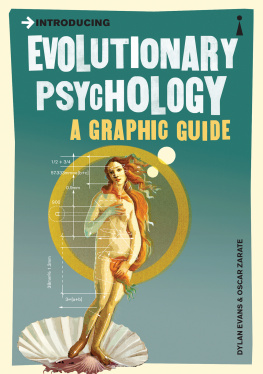David C. Evans [David C. Evans] - Bottlenecks: Aligning UX Design with User Psychology
Here you can read online David C. Evans [David C. Evans] - Bottlenecks: Aligning UX Design with User Psychology full text of the book (entire story) in english for free. Download pdf and epub, get meaning, cover and reviews about this ebook. year: 2017, publisher: Apress, genre: Home and family. Description of the work, (preface) as well as reviews are available. Best literature library LitArk.com created for fans of good reading and offers a wide selection of genres:
Romance novel
Science fiction
Adventure
Detective
Science
History
Home and family
Prose
Art
Politics
Computer
Non-fiction
Religion
Business
Children
Humor
Choose a favorite category and find really read worthwhile books. Enjoy immersion in the world of imagination, feel the emotions of the characters or learn something new for yourself, make an fascinating discovery.
- Book:Bottlenecks: Aligning UX Design with User Psychology
- Author:
- Publisher:Apress
- Genre:
- Year:2017
- Rating:5 / 5
- Favourites:Add to favourites
- Your mark:
Bottlenecks: Aligning UX Design with User Psychology: summary, description and annotation
We offer to read an annotation, description, summary or preface (depends on what the author of the book "Bottlenecks: Aligning UX Design with User Psychology" wrote himself). If you haven't found the necessary information about the book — write in the comments, we will try to find it.
Learn the psychological constrictions of attention, perception, memory, disposition, motivation, and social influence that determine whether customers will be receptive to your digital innovations.
Bottlenecks: Aligning UX Design with User Psychology fills a need for entrepreneurs, designers, and marketing professionals in the application of foundational psychology to user-experience design. The first generation of books on the topic focused on web pages and cognitive psychology. This book covers apps, social media, in-car infotainment, and multiplayer video games, and it explores the crucial roles played by behaviorism, development, personality, and social psychology. Author David Evans is an experimental psychology Ph.D. and senior manager of consumer research at Microsoft who recounts high-stakes case studies in which behavioral theory aligned digital designs with the bottlenecks in human nature to the benefit of users and businesses alike.
Innovators in design and students of psychology will learn:
The psychological processes determining users perception of, engagement with, and recommendation of digital innovations
Examples of interfaces before and after simple psychological alignments that vastly enhanced their effectiveness
Strategies for marketing and product development in an age of social media and behavioral targeting
Hypotheses for research that both academics and enterprises can perform to better meet users needs
Who This Book Is For
Designers and entrepreneurs will use this book to give their innovations an edge on what are increasingly competitive platforms such as apps, bots, in-car apps, augmented reality content. Usability researchers and market researchers will leverage it to enhance their consulting and reporting. Students and lecturers in psychology departments will want it to help land employment in the private sector.
Praise
Bottlenecks is a tight and eminently actionable read for business leaders in startups and enterprises alike. Evans gives us a rich sense of key psychological processes and even richer examples of them in action. - Nir Eyal, Author of Hooked: How to Build Habit-Forming Products
Clients frequently ask our UX researchers and designers for deeper truths about why certain designs work and others fail. Bottlenecks offers practical explanations and evidence based on the idea that human cognition did not begin with the digital age. - John Dirks, UX Director and Partner, Blink UX
Bottlenecks brings together two very important aspects of user experience design: understanding users and translating this into business impact. A must-read for anyone who wants to learn both. - Josh Lamar, Sr. UX Lead, Microsoft Outlook
David C. Evans [David C. Evans]: author's other books
Who wrote Bottlenecks: Aligning UX Design with User Psychology? Find out the surname, the name of the author of the book and a list of all author's works by series.

![David C. Evans [David C. Evans] Bottlenecks: Aligning UX Design with User Psychology](/uploads/posts/book/124056/thumbs/david-c-evans-david-c-evans-bottlenecks.jpg)











